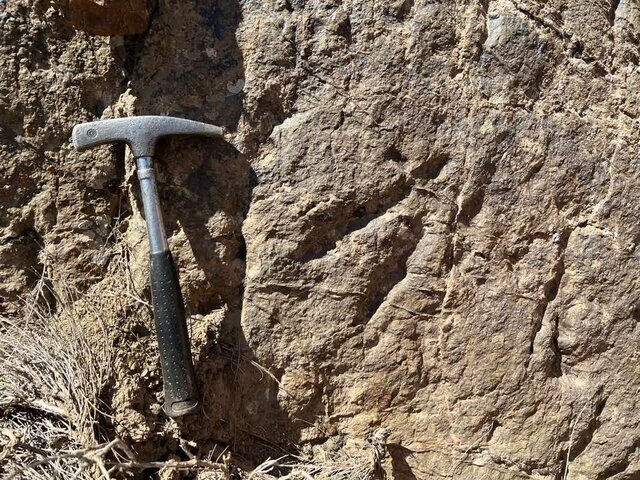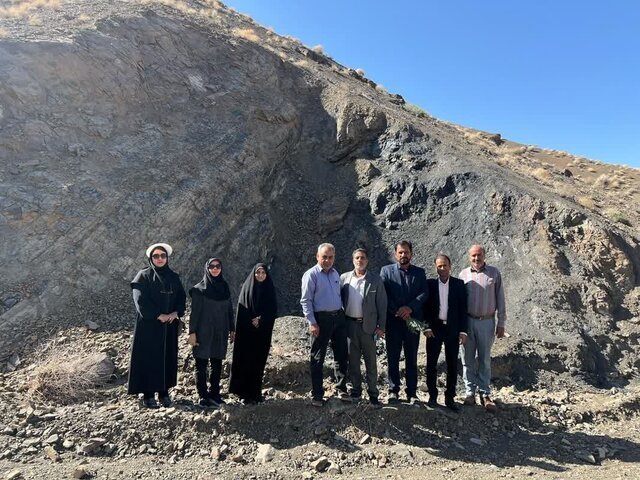TEHRAN – Local heritage and academic staff say dinosaur footprints recently discovered in the Dev Alileza region of Dashtkak in the northern Zarang County in Iran’s Karman province, have been identified as the region’s most important emerging tourist attraction.
On Saturday, Mohammad Eslami, director of the Zarund Cultural Heritage, Tourism and Handicrafts Bureau, visited the site of ancient footprints, accompanied by university leaders in the area. The visit was intended to assess the importance of the site in terms of scientific values and potential for sustainable tourism development.
“The dinosaur footprints are not only important historical and scientific discoveries, but they can also be a unique tourist destination,” Eslami said. He added that the existence of such prehistoric evidence supports the growth of science tourism and can provide deeper insight into the region’s geological and environmental histories.
Eslami emphasized that efforts to protect the site and develop it for tourist purposes will soon begin as part of a broader plan to preserve Zarand’s natural heritage while encouraging responsible visits.
Samanber Mirzai, president of Islamic Azad Zaland University, also attended the visit to highlight the academic importance of discoveries. “This site presents new opportunities for research and teaching in the field of paleontology, enriching the student’s curriculum and serving as the basis for further scientific exploration,” he said.

Local officials and tourism stakeholders also attended during the visit to discuss plans to organize education and science tours. Development of appropriate infrastructure to support tourism on the site was highlighted as an important priority.
According to the ISNA, the findings are based on previous research from the summer of 2002, when a collaborative research team from Iran and Brazil discovered ruins of dinosaur skeletal in the Neiser Valley near the village of Deha Alireza. These included the teeth of theropod dinosaurs and several unidentified bone fragments from surrounding areas.
The newly unearthed footprint belongs to a herbivorous dinosaur that was thought to have lived around 180 million years ago during the Jurassic period. The track is embedded in a sloped rock surface. Unfortunately, some of it is damaged due to negligence.
These findings confirm that both carnivorous and herbivorous dinosaurs once lived in what was known as Zaland, the news said.
The Karman province is a cultural melting pot since ancient times, mixing Persians with subcontinent tribe residents. It is home to countless historical sites and scenic landscapes such as Bazaar-e-Saltasari, Jabally Dome, Ganjali Khan Baths, Malek Jammeh Mosque and the Shadad Desert.
morning

